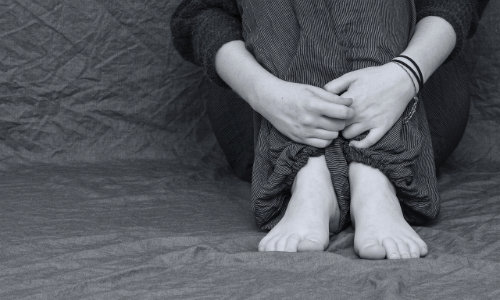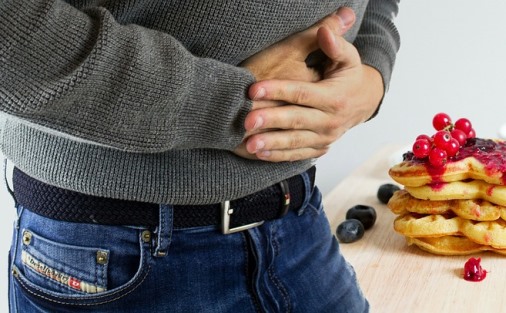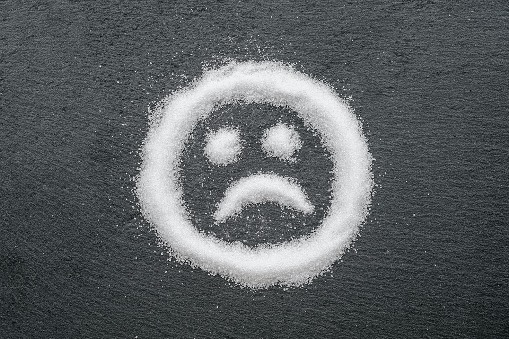- Do you have irregular menstrual periods?
- Are you suffering from obesity?
- Do you have small breast?
MAY BE YOU HAVE POLYCYSTIC OVARIAN SYNDROME…
PCOS: A result of irregular menstrual periods
Poly Cystic Ovarian Syndrome (PCOS) is a condition that has cysts (abnormal growth or sac-like projections inside the body) on the ovaries that prevent the ovaries from performing normally. The problem of PCOS arises due to the presence of small immature egg follicles in the ovaries which leads to oligomenorrhea (irregular menstruation), amenorrhea (absence of menstruation), and prolonged irregular menstrual bleeding, hirsutism (male-pattern hair growth in women), and enlarged ovaries with multiple cysts. Nowadays, it is also referred to as ‘Syndrome O’ i.e. over nourishment, overproduction of insulin, ovarian confusion, and ovulatory disruption. So, a similarity to PCOS is noted as anovulatory (ovulation does not occur) menstruation only.
Types of PCOS
1) Type 1 PCOS: Also called Insulin resistant PCOS, in which ovaries fail to ovulate due to the presence of insulin resistance.
2) Type 2 PCOS: Also called Hormonal imbalance induced PCOS occurs due to hormonal imbalances in the female like LH, FSH, etc.
3) Inflammatory PCOS: Inflammation is a problem for PCOS because it obstructs ovulation, hormones, and stimulates androgens in females.
4) Hidden cause PCOS: This type may occur due to high intake of soy (anti-estrogen) which blocks ovulation in some women, thyroid disease which impairs ovulation due to lack of T3 thyroid hormone, zinc-deficient vegetables, iodine deficiency, artificial sweeteners which damage insulin and starch deficiency.
Symptoms
Symptoms of PCOS typically start soon after a woman begins to menstruate (menarche). The most common characteristic of PCOS is irregular menstrual periods. Due to a decrease in female sex hormones, women tend to develop certain male characteristics like hirsutism (male-pattern hair growth in women) decrease in breast size, deeper voice, thin hair, acne, weight gain, pelvic pain, anxiety or depression, and infertility. The absence of menstruation for a period of 45 days or more and/or 8 or fewer menstrual cycles per year are also important diagnostic signs. Oligomenorrhoea (irregular menstrual cycle) is considered an important marker of PCOS and also an independent predictor of Type II Diabetes.
What causes PCOS?
While the cause of PCOS is unknown there do appear to be connections with family history, insulin resistance, and lifestyle or environment. Immediate female relatives (daughters or sisters) of women with PCOS have up to a 50% chance of developing PCOS. The high levels of androgens such as testosterone, in the ovaries are the immediate cause of PCOS. Insulin resistance is present in up to 80 percent of women with PCOS and this can contribute to an increased risk of developing type-2 diabetes and cardiovascular disease. Women without PCOS who are overweight can have this form of insulin resistance; women with PCOS are more likely to have a particular form of insulin resistance caused by genetic factors separate from the insulin resistance associated with being overweight. Being above a healthy weight worsens insulin resistance and the symptoms of PCOS.
Ayurvedic prospective of PCOS
Ayurveda describes PCOS to have an equal involvement of the Dosha, Dhatuand Upadhatu. It does not co-relate the condition to a single disease or syndrome but the symptoms bear a resemblance to Anartava(amenorrhoea), Yonivyapad (anatomical and physiological disorders of the reproductive system) like: Arajaska(oligomenorrhoea), Lohitakshaya(oligomenorrhoea), Shushka(dryness ofvagina), Shandhi (reproductivedisorderofgeneticorigin), Vandhya (infertility), PushpaghniRevati (idiosyncratic anovulatory menstruation), Abeejata (anovulation), RajodushtiandAshtartavadushti (menstrual flow disorder) etc.
Ayurvedic Management of PCOS
- Use of various lekhandravyaslike take, vyoshadyasattu along with lifestyle modification including yoga is useful in the management of medovridhhi.
- Sukumaraghrita described by Acharyavagbhata reduces the size of ovarian cyst.
- Pathadikwatha described by Sushruta when given orally along with satapushpatel (oil),matrabasti for seven days after cessation of menstruation is found to be effective.
- Triphala, Kwatha, Chandraprabha, and powder of Manibhadra administered twice a day detoxify the toxins in the vaginal tract and remove the infection.
- Panchakarma techniques like Basti, Uttar Basti are mostly performed to detoxify the body before treatment.
- Shatavari oil &sahachar oil contains til oil which is effective for menstrual problems.
- Atibala is used to correct the hormonal disturbances and facilitates avoiding miscarriages.
- Sahacharais used to remove unwanted follicles.












